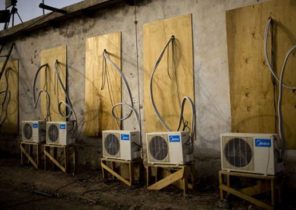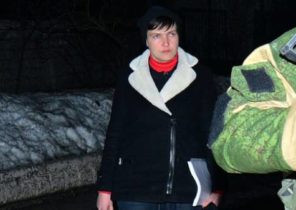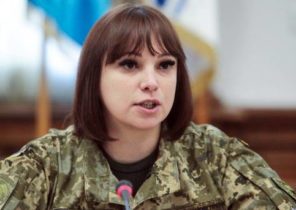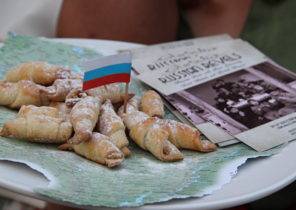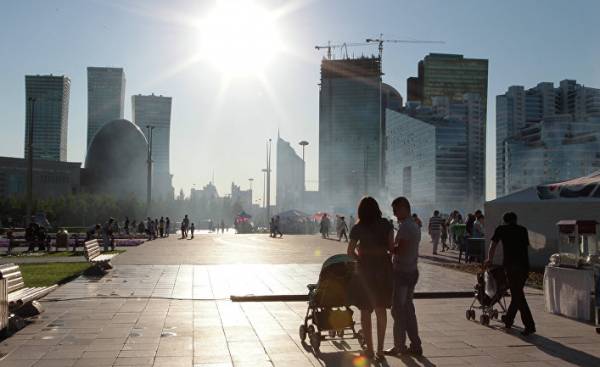
Power khans and major dignitaries looking into the distance. Around the fierce battle. The scenes depicted in the paintings opened recently in Kazakhstan the exhibition, which is an attempt to present new light on key events of the last Republic.
Located in Almaty, State Museum of arts. Kasteev is the leading art gallery of the country — ordered the work in the framework of the Republican contest, whose goal was to create images that reflect the past of Kazakhstan. The idea of competition was born after a Museum discovered a significant gap in his collection: he had almost nothing on the history of Kazakhstan.
“We had thousands of paintings and sculptures in the genre of Soviet realism or socialist realism, but… we didn’t have anything about Kazakh history,” said EurasiaNet.org head of the Center for management and external relations of the Museum Clara Isabaeva.
“[In Soviet times there was a policy], not allowing too deeply into national history. It was not welcomed. So we didn’t have such historical paintings, explained Isabaeva. In this regard, our Director, Professor [Gulmira] shalabaeva, initiated this contest at the historic fine arts, including paintings and sculpture.”
The exhibition presents images of battle scenes, the visit of Russian ambassadors and national disasters, as well as portraits of khans and sultans who once ruled these lands, and other notable historical figures.
“I am delighted that the exhibition includes pictures of many extremely important for the Kazakh people historical events, — said Isabaeva. Was created works on the theme of the most important historical events in life of the Kazakh people.”
The winner of the contest determined by a jury of 15 experts in the field of art. Most of the work was couched in the conservative and moralizing style, strongly reminiscent of the genre of socialist realism that dominated Soviet art until the end of 1960-ies.
The winner’s name was familiar. Dauren Kasteyev is the grandson of Abylkhan Kasteev, in whose honor the Museum was named. Kasteev Sr., who died in 1973, just a few months before his 70th anniversary, many considered the father of Kazakh art. He is known for his socialist realist interpretations on the topic of the Communist period in the history of Kazakhstan.
Took first place in the triptych of Kazakhstan Kasteev “Aktaban Shubyryndy” (“Years of Great disaster”), named in honor of a long fratricidal wars between the Kazakhs in the XVIII century, almost leading the nation to total destruction at the hands of old enemies — djungars.
Another notable work is a painting by Vyacheslav Zeitlin “left by the ancestors independence” or “Alash Orda”. The painting includes images of various events and objects, including gallocanta protests of 1986, the nuclear tests in Semipalatinsk and of the figures of the members of the provisional government of Alash Orda, who was in power in 1917-1920. I found the painting among famous historical figures and to President Nursultan Nazarbayev, the only leader who knew the country after independence in 1991. He is depicted in the upper left part of the work, surrounded by famous buildings of Astana, the current capital of Kazakhstan.
This event is probably one of the last examples of using art for promotion of the national idea, and example of this seems very remarkable, says Rico Isaacs of the University of Oxford Brookes in the UK, conducting research on the topic of how the culture in Kazakhstan is used as a tool for shaping national identity.
“When the government accepted the construction project of the state, as is the case in Kazakhstan, visual mechanisms, including art and sculpture play a key role in shaping the imagination of the nation, depicting landscapes, allegories, celebrations, historical events and national heroes”, — he said EurasiaNet.org.
Art is the link that can unite different groups of the population.
“Art is important for Kazakhstan, since it touches the innermost corners of the soul. It is useful of the Kazakh nation, as it allows people living in one area, but not familiar with each other, imagine that they are part of the same society and share common history, myths and heroes. Art, if to use them correctly, able to develop intra-state ethno-national ties.”
This is not the first example of the use of Kazakhstan culture to stimulate Patriotic feelings. The government generously invests in Opera and ballet, including the allocation of $ 320 million for the construction of “Astana-Opera”, which ended in 2013. The repertoire of the theatre includes the popular production of “Karagoz” (drama in the style of Romeo and Juliet, unfolding in the Kazakhstan steppes) and “Kyz announces cast” (the first national Opera in a new format that tells the story of lovers on the vast steppes of Kazakhstan and include scenes with real horses and camels).
The need to intensify efforts to strengthen national identity was highlighted in 2014, when Russian leader Vladimir Putin, after Russia’s annexation of Crimea and the conflict in the East of Ukraine, expressed doubts about the sustainability of Kazakhstan as an independent state.
A year later, Kazakhstan organized a magnificent celebration of the 550th anniversary of the founding of the Kazakh khanate, protocatechic of the state established pursuant to the khans Kerey and Zhanibek in 1465. The history of this region is an important element of the efforts of the current authorities, trying to show that Kazakhstan is solid state with a deep history. “At the time of the collapse of the Soviet Union, the ethnic Kazakhs were in Kazakhstan in the minority. Since then, the government tried to promote the idea of a “Kazakh” nation, trying to convince people the sense of national unity and integration of the joint historical past,” said Isaacs.
Even more to fix in the minds of people a sense of belonging to one people, United by a shared history, a tale of Kerey and Zhanibek was turned into a television series that is soon to get in the car. The elements of the story are also included in the recently released feature film “Almas Kylysh” (“Diamond sword”).
According to Isaacs, the background of new statements of the Russian deputies about the territorial integrity of Kazakhstan, Astana will need to continue to promote the national idea of the overall story. “Events in Eastern Ukraine, coupled with inflammatory statements of deputies of the Russian Duma, calling into question the membership of Kazakhstan its Northern areas, make the promotion of the national idea is very important,” he said.

